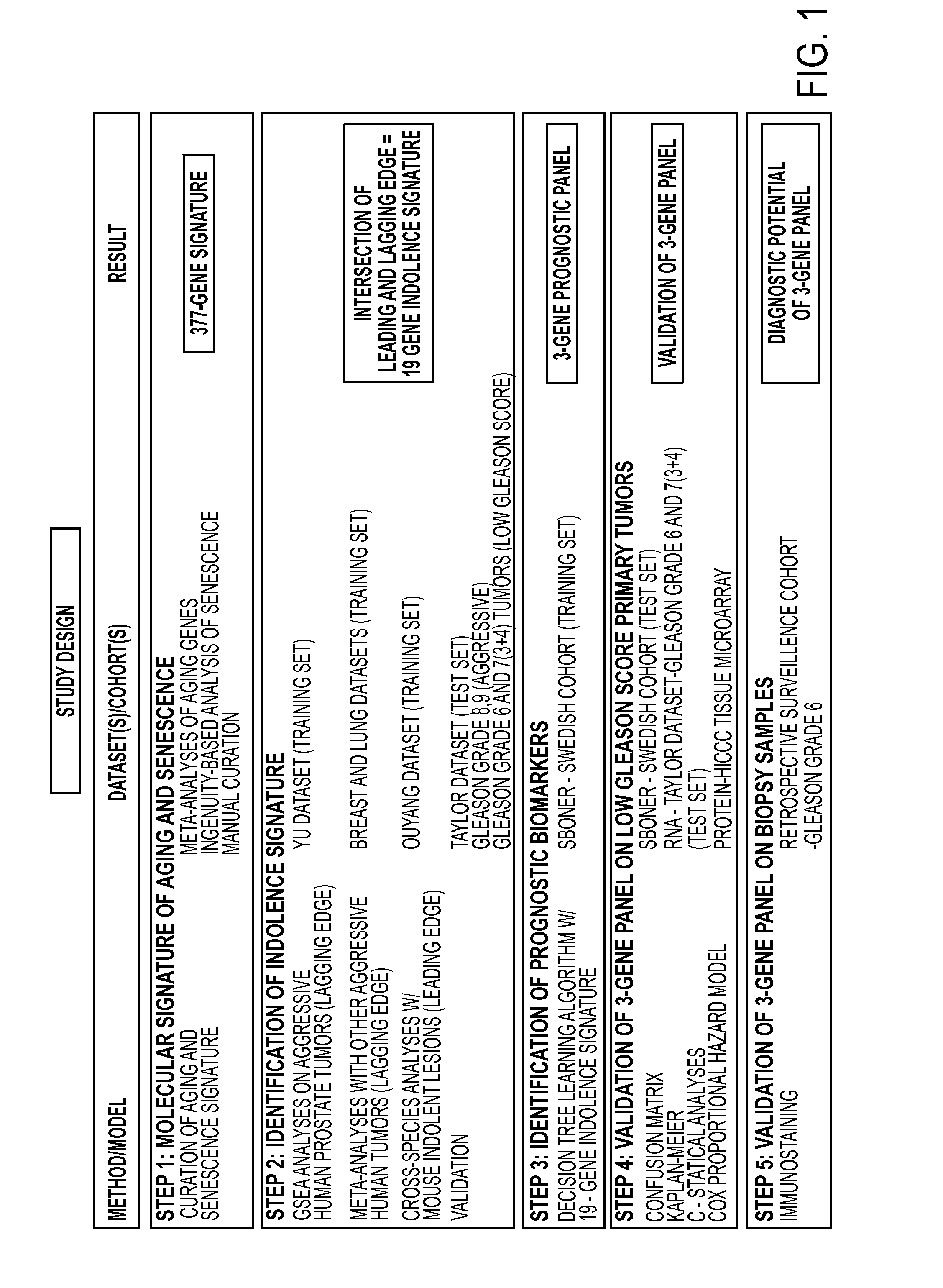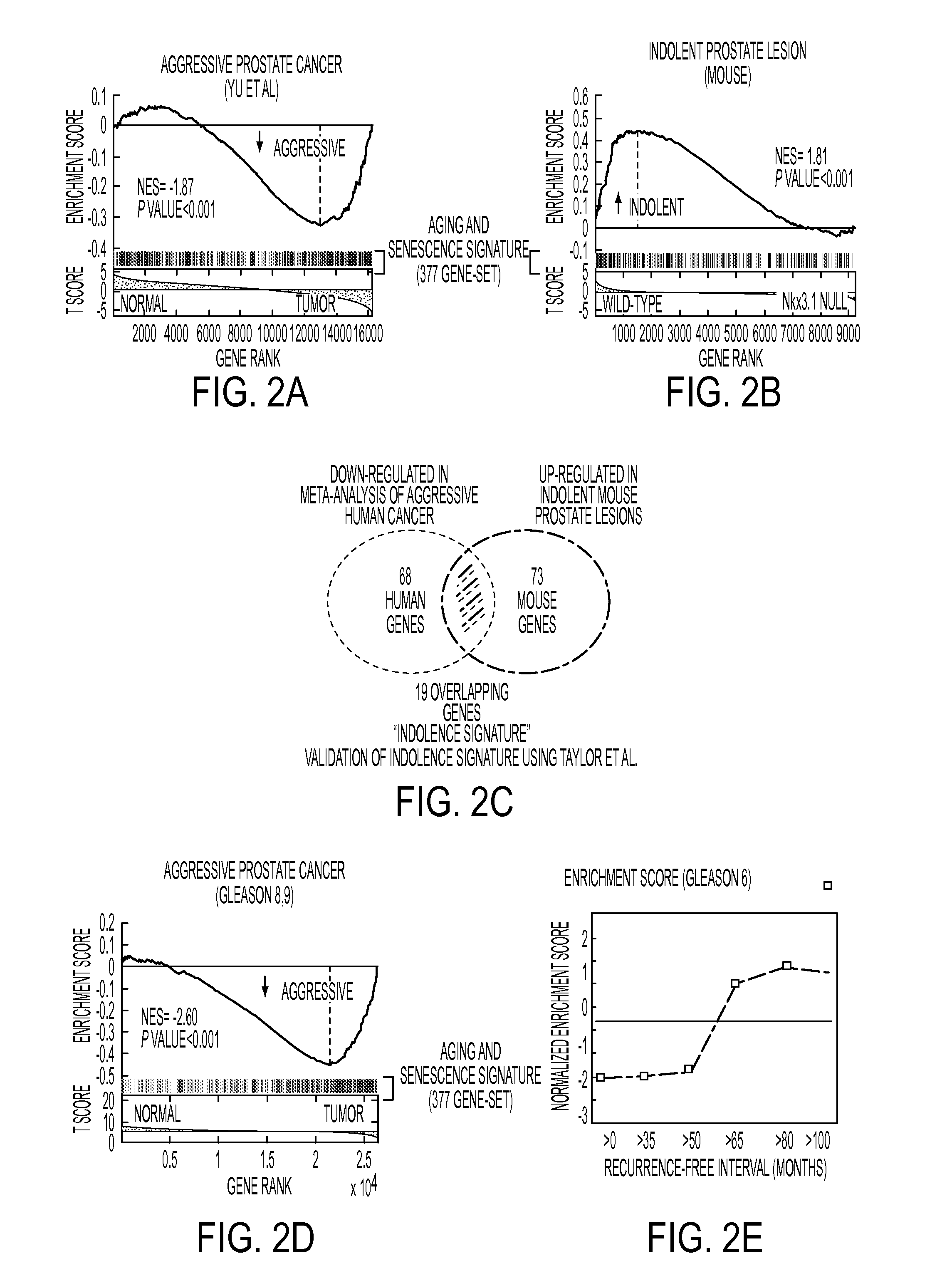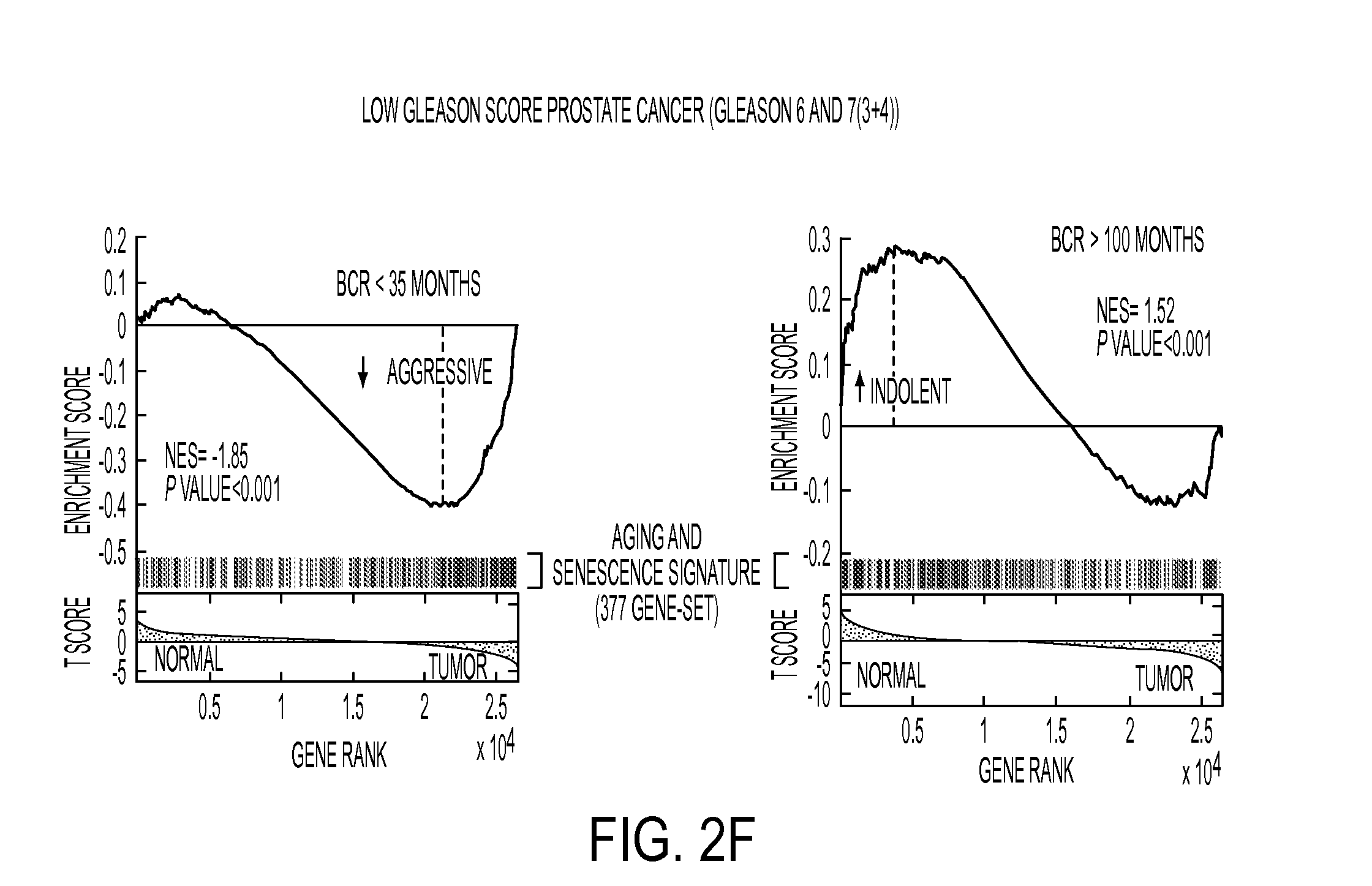Diagnostic Markers of Indolent Prostate Cancer
a prostate cancer and indolent technology, applied in the field of indolent prostate cancer diagnosis markers, can solve the problems of inability to identify relevant biomarkers, inability to detect active surveillance, and inability to detect indolent aggressiveness, so as to facilitate hybridization detection
- Summary
- Abstract
- Description
- Claims
- Application Information
AI Technical Summary
Benefits of technology
Problems solved by technology
Method used
Image
Examples
example 1
Materials and Methods
[0124]Study Design: The study design is shown in FIG. 1. The present study was designed to test the hypothesis that molecular processes of aging and senescence distinguish indolent versus aggressive prostate cancer (FIG. 1). This hypothesis was tested by first assembling a 377-gene signature of aging and cellular senescence, which was used to query human cancer profiles (Table 1), as well as using a mouse model of indolent prostate cancer using GSEA. This resulted in the identification of a 19-gene indolence signature, which was then used to perform decision-tree learning using an independent human cohort to identify a 3-gene prognostic panel that was validated at the mRNA and protein levels using independent cohorts, and then validated on biopsies from patients on active surveillance.
[0125]Statistical methods: K-means clustering was done using the “kmeans” function from the Statistical toolbox in MATLAB. For confusion matrices, accurate predictions were calcula...
example 2
[0142]Methods for Isolating Protein and mRNA for the Ouyang, et al. Dataset: Cancer Res 2005; 65: (15). Aug. 1, 2005.
[0143]To further minimize variability from individual specimens, prostate tissues from three independent animals were pooled to generate RNA for each array and a minimum of three arrays were probed for the wild-type and mutant mice (thus allowing comparison of a total of nine mice for each). RNA was extracted using Trizol (Invitrogen, Carlsbad, Calif.) and purified using an RNeasy kit (Qiagen, Chatsworth, Calif.). cDNA was labeled using a BioArray High-Yield RNA transcript labeling kit (Enzo Life Sciences, Farmingdale, N.Y.) and hybridized to Affymetrix GeneChips (Mu74AV2). For statistical analyses, initial data acquisition and normalization was done using Affymetrix Microarray Suite 5.0 software followed by an ANOVA test. Validation of gene expression changes by quantitative reverse transcription-PCR was done using an Mx4000 Multiplex Quantitative PCR system (Stratag...
example 3
[0144]Methods for Isolating Protein and mRNA for the Yu Dataset:
[0145]A comprehensive gene expression analysis was performed on 152 human prostate samples, including prostate cancer (PC), prostate tissues adjacent to (AT) cancer, and donor (OD) prostate tissue totally free of disease, using the Affymetrix (Santa Clara, Calif.) U95a, U95b, and U95c chip sets. A set of 671 genes were identified whose expression levels were significantly altered in PCs compared with normal tissues. Interestingly, the expression patterns of histological benign prostate tissues were significantly overlapped with those of PC, and were distinctly different than donor prostate tissue. Separately, a “70-gene” model was developed to predict the aggressiveness of the disease. Collectively, these data suggest that genetic alterations in a gland with PC are not limited to the malignant cells, and these patterns of alteration may predict the population both at risk for the disease and for disease progression.
[014...
PUM
| Property | Measurement | Unit |
|---|---|---|
| pH | aaaaa | aaaaa |
| concentration | aaaaa | aaaaa |
| pH | aaaaa | aaaaa |
Abstract
Description
Claims
Application Information
 Login to View More
Login to View More - R&D
- Intellectual Property
- Life Sciences
- Materials
- Tech Scout
- Unparalleled Data Quality
- Higher Quality Content
- 60% Fewer Hallucinations
Browse by: Latest US Patents, China's latest patents, Technical Efficacy Thesaurus, Application Domain, Technology Topic, Popular Technical Reports.
© 2025 PatSnap. All rights reserved.Legal|Privacy policy|Modern Slavery Act Transparency Statement|Sitemap|About US| Contact US: help@patsnap.com



